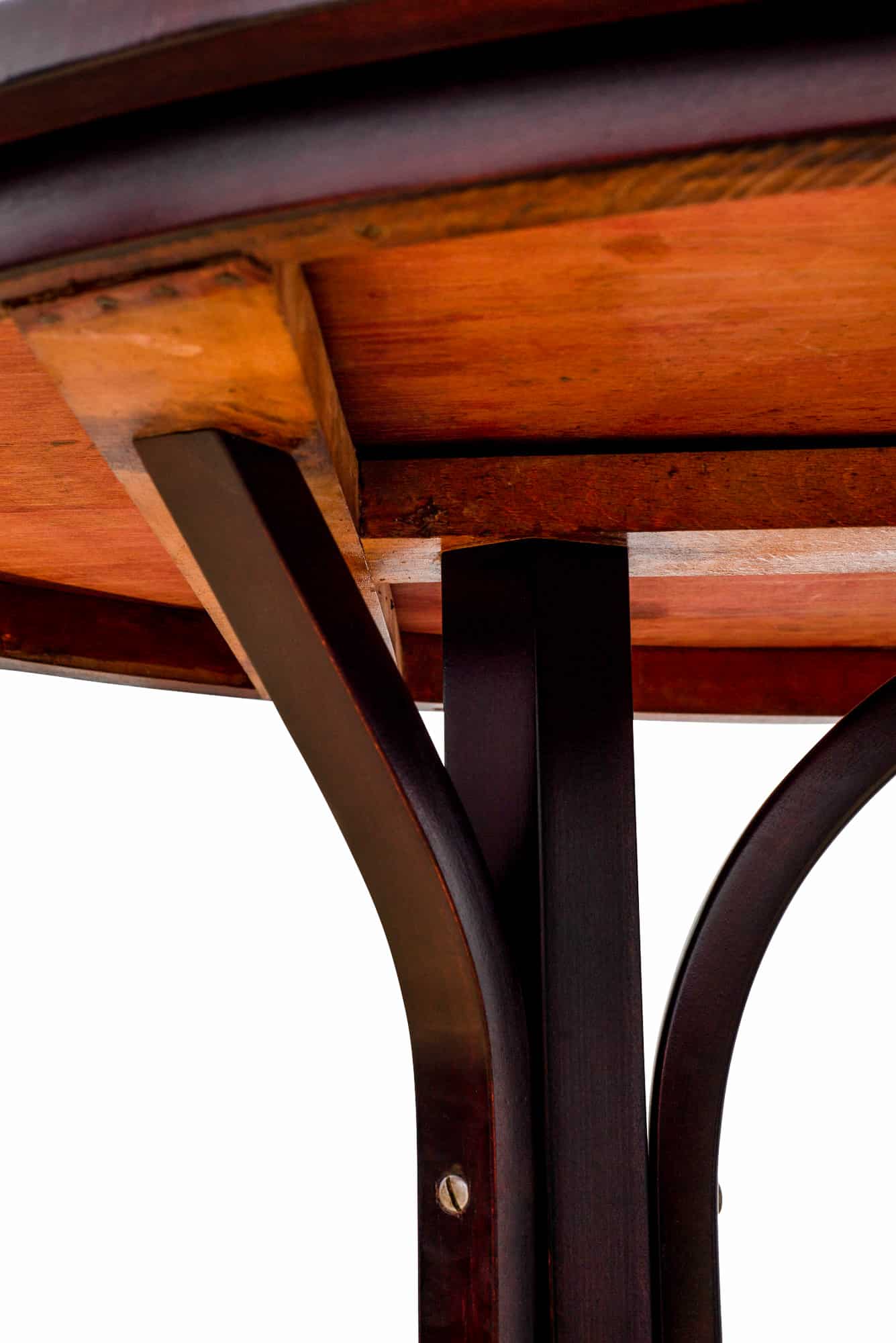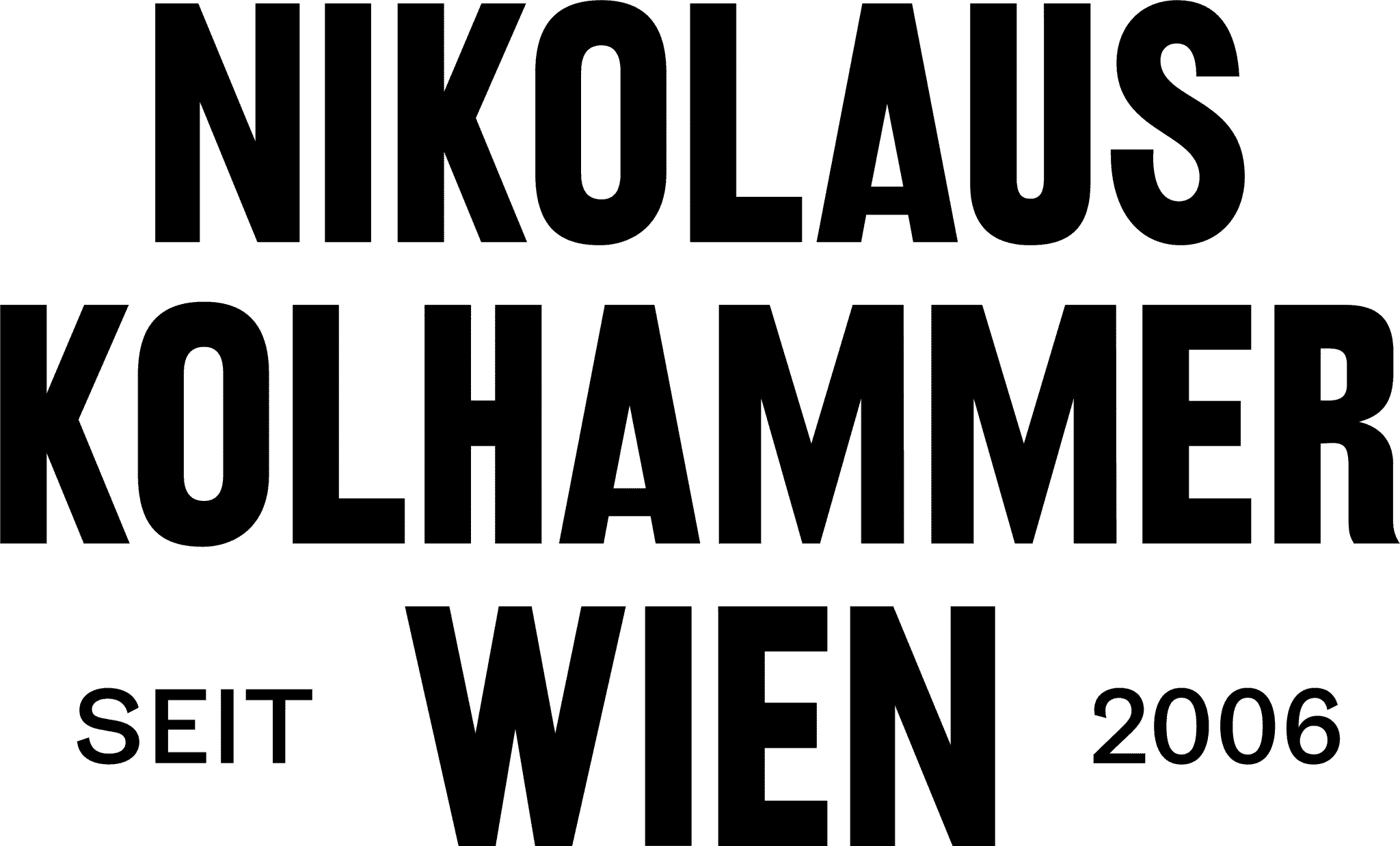Oval table Otto Wagner attr. Thonet ca. 1905
Oval table, Otto Wagner attributed, Gebruder Thonet Wien, mod. no. 8051, ca. 1905, beechwood and brass, original Thonet-label
Out of stock
Description
At the turn of the century Otto Wagner radicalized his style and avoided any ornamentation in favor of an elegantly swinging design. This sober and at the same time harmonious appearance, which we know, for instance, from his designs for the Postsparkasse furniture, can also be found in this table, which is attributed to Wagner. Not least because of the fact that the design was dated around 1904, which falls into exactly the same phase.
The table has a clear and functional form. The curved legs provide a firm strut, but at the same time a very successful design solution, giving the massive table a sense of lightness and playfulness. The brass mountings also have a double function, protecting the base and serving as color accents as well.
Otto Wagner often worked together with “Thonet”, because their innovative bentwood technology offered completely new design perspectives. The table can be found in their 1911 catalogue as model 8051.
Artist
Otto Wagner (Vienna 1841 – 1918 Vienna) was one of the pioneering architects of Viennese Modernism, who led Austria to abandon the overloaded historicist style. Both in architecture and design, he implemented his postulate that form must follow function and systematically used new materials in his projects, such as aluminium or bentwood.
His main works include the Postsparkassengebäude (postal savings bank building) and the Steinhof church in Vienna, as well as the three Wienzeilenhäuser (residential houses). He also set urban development standards with his project for the Vienna tramway network.
As an already established architect, he taught at the Academy of Fine Arts in Vienna from 1894 to 1915 and thus exerted great influence on the next generation of Viennese architects.
In the years 1899 to 1905, he was a member of the Viennese Secession and became an important mentor of renowned students and co-workers, including Joseph Maria Olbrich, Josef Hoffmann and Gustav Siegel.
With his buildings, he proclaimed the architectural style of the 20th century, as Berta Zuckerkandl put it, and he created iconic classics in his furniture design, with a sense of aesthetics far ahead of their time.
Execution
Like no other company name, Thonet stands for Viennese Jugendstil bentwood furniture. The “Wiener Kaffeehausstuhl” (Viennese coffee house chair) from 1859 with the model number 14 has even made it into design history as a furniture icon.
Michael Thonet (Boppard 1796 – 1871 Vienna), founder of the Gebrüder Thonet company, ensured its success by securing a patent in for the production of bentwood in 1842. Until the 1860s, he and his sons had a de facto monopoly on this innovative technique of bending wood under the effect of steam to make chairs and other furnishings.
Bentwood technology had revolutionized European furniture design in the 19th century, as it enabled the development from handcrafted carpentry to industrial-serial production. Thonet managed this leap from manufacture to industrial serial production while maintaining high quality standards.
Aesthetically at the cutting edge, Thonet commissioned renowned contemporary architects to design furniture, such as Otto Wagner, Josef Hoffmann, Marcel Kammerer and Otto Prutscher.
Thonet’s modern furnishings have been presented at many international exhibitions in Europe and overseas and have received many awards. The company owes its great commercial success to its dense distribution network with branches in all major European cities.
In 1922, Thonet merged with the Mundus company, which had already acquired the company J. &. J. Kohn in 1914.
Inquiry
By submitting the inquiry form, you agree to the use of your data for this inquiry. Privacy Policy

















